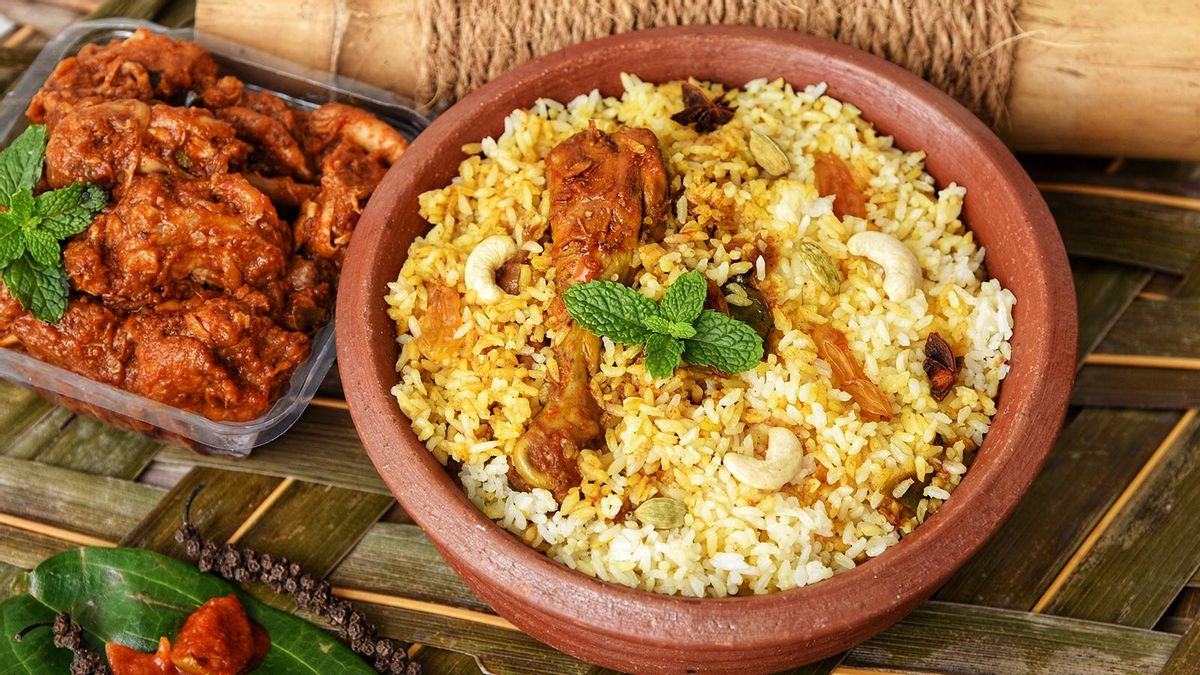The Chettinad biryani is loaded with spices but won’t set your mouth on fire. In fact, this dish is full of surprises.
No raita or basmati with this biryani
It doesn’t follow the ‘biryani’ conventions one is familiar with therefore there is no raita, no basmati, no saffron, no dry fruits and no ghee.
Instead of raita, the Chettinad biryani is accompanied by Ennai Kathirikai, a tangy preparation of brinjals enhanced with spices. Ennai is oil and Kathirikai means brinjal in Tamil. The oil doesn’t float on the surface but is soaked by the ingredients during the cooking process.
Basmati is almost synonymous with biryani. But, Chettinad biryani exclusively uses Seeraga Samba, a short-grained fragrant rice. The grain resembles cumin seeds or jeera which is known as Seera in Tamil and Samba is the sowing period which is usually August-September.
So what is the x-factor of Chettinad biryani? A rich and perfectly balanced combination of spices, this biryani is an antidote to the stereotype that spice equals a fiery or intensely pungent taste.
From Arabs to Chettiyars
Chettinad in Tamil Nadu was a strategic location for the spice trade. Its residents, the Chettiyars, prospered in the business of peppers and chillies with countries in Southeast Asia and the Arabs. Some food historians believe that biryani was introduced on the Malabar Coast by these Arab traders.
The cuisine reflects the richness and diversity of spices available here, and Chettinad biryani encapsulates its many influences. Chicken is favoured over mutton because fowl meat is tastier in this region and lends itself well to the spices.
Taste the slow-cooked Chettinad Biryani
Dry spices are hand ground and they follow the traditional dum-style of biryani preparation. Rice is combined with meat, seasoned with spices and allowed to cook on a slow fire in an Uruli, a traditional cooking pot in South India. The Uruli is covered and sealed with dough, allowing the meat to tenderise in its own juices while releasing the flavours to coat each grain. Chef Jinesh Joseph, who works with the Marriott International chain, shares the Chettinad Biryani recipe for you to try at home:
Chettinad Biryani Recipe
Ingredients
- 500 gms Seeraga Samba rice, soaked for an hour
- 500 gms chicken
- 250 gms onion, sliced
- 500 gms tomatoes, sliced
- 3-4 cardamom, whole
- 3-4 cinnamon, whole
- 2-3 bay leaf
- 2-3 mace
- 3-4 green chillies, slits
- 2 tbsp ginger garlic paste
- 1 tsp chilli powder
- 1 tsp turmeric powder
- 1 tbsp curd
- Sunflower oil for cooking
- Salt to taste
- ½ litre boiling water
- Dough for sealing the utensil
- For the Biryani Masala:
- 3-4 nos of Kalpasi
- 3-4 nos of Marathi Moggu
- 2 nos Cardamom
- ½ tsp Green fennel seeds
- 1-2 nos cinnamon sticks
- 1-2 star anise, whole
- 1-2 bay leaf, whole
Method
- Hand grind the ingredients of biryani masala and keep them aside.
- In a deep-bottomed pan, add five tablespoons of sunflower oil. Put the onions and cook in medium flame till they turn brown.
- Add cardamom, cinnamon, bay leaf, mace and gently stir till the spices start releasing their aromas.
- Next, add ginger garlic paste, fresh chilli, tomatoes, chilli powder and turmeric. Cook till all the ingredients combine.
- Now, add the biryani masala and curd and let it cook for two to three minutes.
- Put the chicken and gently stir until each piece is coated with the masala. Let the chicken cook for at least 10-15 minutes till it is partly done and imparts its flavours to the masalas.
- Finally, add the rice and water. Add salt to taste. Bring this to a boil.
- Now cover the utensil. Place a heavy object on the cover, put the flame on low, seal the cover with dough and allow the biryani to dum-cook for about 10 mins.
- Turn off the flame and let it rest for 30 minutes before removing the seal and serving.


